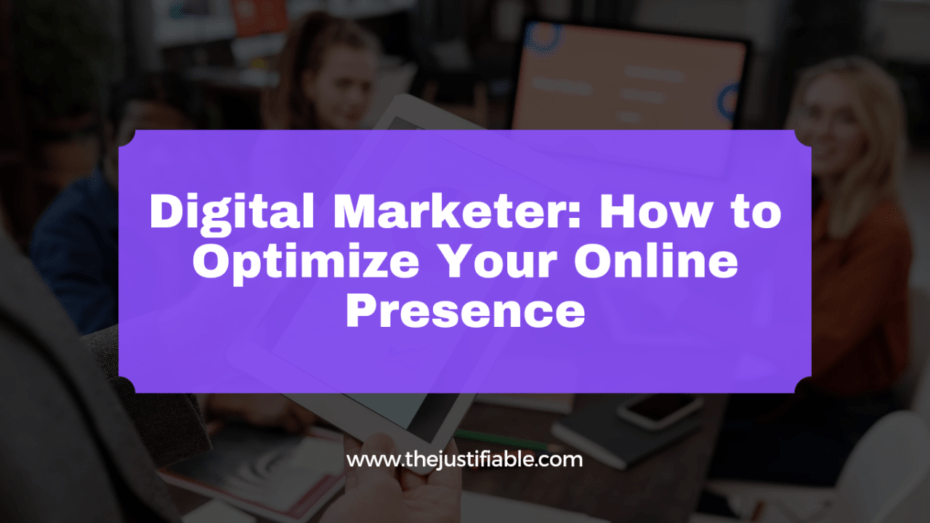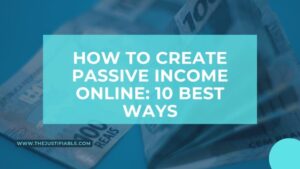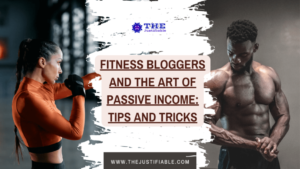Table of Contents
In the dynamic world of digital marketing, it’s more important than ever to establish and optimize your online presence.
As a digital marketer, you hold the key to unlock countless opportunities to connect with your audience, build strong relationships, and ultimately, drive business success.
The role of a digital marketer involves navigating the rapidly changing digital landscape, leveraging different tools and strategies to increase visibility, engagement, and conversion. But what exactly does it take to optimize your online presence?
This involves a combination of search engine optimization (SEO), content creation, social media marketing, email marketing, and more. In this comprehensive guide, we’ll explore the essential strategies and tactics that can help you amplify your online presence, attract the right audience, and meet your marketing objectives.
Understanding the Role of a Digital Marketer
The role of a digital marketer in today’s interconnected world cannot be overstated. As a digital marketer, your primary focus is to establish, promote, and enhance the online presence of a brand or a product.
This is achieved by utilizing a variety of digital marketing strategies and tools, such as search engine optimization (SEO), pay-per-click (PPC) advertising, content marketing, social media marketing, email marketing, and more.
In essence, a digital marketer is a conductor orchestrating a symphony of tactics to create a cohesive and compelling online narrative that resonates with the target audience. The beauty of being a digital marketer lies in the diversity of tasks and the fast-paced environment.
On any given day, you might find yourself analyzing web traffic data, crafting an engaging email campaign, optimizing website content for SEO, coordinating with influencers for a social media campaign, or brainstorming creative ideas for a viral video.
Essentially, as a digital marketer, you’re a storyteller, a data analyst, a project manager, and a strategist all rolled into one. The ultimate goal? To connect with your audience, foster relationships, and guide them along the conversion journey – turning prospects into loyal customers.
Importance of Optimizing Your Online Presence
In the digital age, having a robust online presence is not just an option but a necessity. Whether you are a small business, a multinational corporation, or an individual digital marketer, your online presence is your digital footprint in the world wide web. It’s how your current and potential customers perceive you in the digital realm.
But what does it mean to optimize your online presence? Optimizing your online presence means enhancing your visibility and reputation online. It involves implementing SEO strategies to rank higher on search engine results pages, creating high-quality, engaging content that resonates with your audience, and actively managing your social media profiles to foster community engagement and brand loyalty.
It also includes optimizing your website for user experience, ensuring it’s easy to navigate, mobile-friendly, and provides value to its visitors. When done right, optimizing your online presence can have a significant impact on your business. It can increase your brand’s reach, improve customer interaction, drive more traffic to your website, and ultimately, boost conversions and sales.
In the increasingly competitive digital landscape, a well-optimized online presence is a powerful tool that can set you apart from your competitors and position you as a leader in your industry.
Digital Marketing Strategies
Diving into the world of digital marketing, one quickly realizes the vast array of strategies available to enhance online visibility and engagement. The key to a successful digital marketing campaign lies not only in understanding these strategies but also in the ability to integrate them effectively.
It’s about crafting a multi-faceted digital marketing plan that aligns with your business goals, targets your ideal audience, and delivers measurable results. Search engine optimization (SEO) is a fundamental digital marketing strategy that involves optimizing your website and content to rank higher in search engine results pages (SERPs).
An effective SEO strategy not only drives more organic traffic to your website but also improves the quality of that traffic by targeting keywords relevant to your products or services. Pay-per-click (PPC) advertising, another critical digital marketing strategy, involves placing ads on search engines or social media platforms and paying a fee each time the ad is clicked.
PPC advertising can quickly generate visibility and traffic, making it a valuable strategy for new businesses or products. Content marketing and social media marketing are two strategies that work hand in hand. Creating valuable, engaging content and sharing it on your social media platforms can increase brand awareness, foster community engagement, and drive traffic back to your website.
Additionally, email marketing remains a highly effective strategy, providing a direct line of communication to your audience and offering exceptional ROI when executed correctly. Lastly, data analytics is a crucial part of any digital marketing strategy. It provides valuable insights into your audience’s behavior, enabling you to refine your strategies, improve user experience, and increase conversions.
Remember, there’s no one-size-fits-all approach to digital marketing. The most effective strategies are tailored to your unique business goals, target audience, and industry landscape. By understanding and implementing these strategies, you can optimize your online presence and set your brand up for digital marketing success.
Key Elements of Effective Digital Marketing
Digital marketing, in its essence, is a confluence of various elements, each contributing to the overall success of your online marketing efforts. One of the foundational elements is a well-structured website. Your website is your online storefront, acting as the primary touchpoint between your brand and your audience.
It should offer an intuitive user experience, fast loading times, and mobile-friendly design, all while being SEO-optimized to rank high in search engine results. Content is another critical component. In the world of digital marketing, content is king. High-quality, relevant, and engaging content not only helps to attract and retain your audience but also boosts your SEO efforts.
It’s important to have a content strategy in place that aligns with your brand message and caters to the interests of your target audience. Social media presence is another key element. Platforms like Facebook, Instagram, Twitter, LinkedIn, and others offer a direct line of communication with your audience and provide opportunities to build brand awareness and loyalty.
Email marketing, when done correctly, can provide one of the highest returns on investment of any digital marketing strategy. It allows for direct, personalized communication with your audience and is excellent for nurturing leads and driving conversions.
Lastly, analytics and reporting are essential to measure the effectiveness of your digital marketing strategies. Tools like Google Analytics can provide valuable insights into your audience’s behavior and the performance of your website and marketing campaigns.
Latest Trends in Digital Marketing Strategies
The digital marketing landscape is constantly evolving, with new trends and technologies emerging that offer innovative ways to connect with consumers. One of the current trends shaping the digital marketing world is the increased use of artificial intelligence (AI).
AI is being used in digital marketing to personalize the customer experience, predict customer behavior, and improve ad targeting. Another growing trend is the rise of voice search. As more consumers use digital assistants like Alexa, Siri, and Google Assistant, optimizing for voice search is becoming increasingly important for businesses.
Influencer marketing continues to grow as well, with businesses partnering with influencers to reach their dedicated and engaged audiences. In particular, micro-influencers, who have smaller but highly engaged followings, are becoming a popular choice for businesses looking to build authentic connections with their audience.
Lastly, the use of video content continues to surge. Whether it’s live streams, webinars, or short-form videos on platforms like TikTok and Instagram Reels, video content is a powerful way to engage audiences and convey your brand message.
Case Studies of Successful Digital Marketing Strategies
Learning from successful digital marketing strategies can provide valuable insights for your own marketing efforts. For instance, the fashion retailer ASOS has excelled in their use of social media marketing. They have effectively utilized user-generated content, encouraging their customers to use a specific hashtag when posting photos of their ASOS outfits.
This not only provides ASOS with free content but also makes their customers feel valued and engaged with the brand. Another example is the email marketing strategy of the beauty retailer Sephora. They have a highly segmented email strategy, sending personalized product recommendations and offers based on the customer’s purchase history and browsing behavior.
This personalized approach has led to increased click-through rates and conversions. Lastly, let’s look at the SEO strategy of Zillow, a leading real estate website. Zillow has effectively used SEO to dominate search engine results in the real estate industry.
They have done this by creating high-quality, keyword-optimized content and ensuring their website is user-friendly and mobile-optimized. Their success demonstrates the power of SEO in driving organic traffic and improving online visibility.
Optimizing Online Presence
In an increasingly digital age, your online presence is often the first point of contact between your business and potential customers. As such, optimizing your online presence is crucial in order to stand out from the competition, connect with your target audience, and drive conversions.
But how exactly can you optimize your online presence? The answer lies in a combination of SEO best practices, social media optimization, and tactics to improve website visibility.
SEO Best Practices for Enhancing Online Visibility
SEO, or Search Engine Optimization, is a cornerstone of digital marketing. By adhering to SEO best practices, you can improve your website’s ranking on search engine results pages (SERPs), thereby enhancing your online visibility.
First and foremost, keyword optimization is key. This involves identifying relevant keywords that your target audience is likely to use when searching for the products or services you offer, and strategically incorporating these keywords into your website content.
Next, consider the structure and usability of your website. A user-friendly, intuitively structured website not only improves user experience, but is also favored by search engines. This includes having a mobile-friendly design, fast loading times, and easy-to-navigate pages.
Lastly, link building is an essential part of SEO. This involves earning backlinks from other reputable websites, which signals to search engines that your website is a trustworthy and authoritative source. Remember, SEO is a long-term strategy that requires ongoing efforts, but the payoff in terms of increased online visibility can be substantial.
Social Media Optimization for Online Presence
Social media platforms are powerful tools for enhancing your online presence. To optimize your social media profiles, start by ensuring that your branding is consistent across all platforms. This includes using the same profile picture, cover image, and bio, as well as incorporating your brand’s color scheme and voice.
Next, engage with your audience regularly. This could involve responding to comments, liking and sharing relevant posts, and providing timely customer service. Regularly posting high-quality, engaging content is also essential. This could include industry news, behind-the-scenes peeks, promotional offers, and user-generated content.
Finally, make use of each platform’s unique features. For example, you might use Instagram Stories for time-limited content, Facebook Live for Q&As or product launches, and Twitter polls to gather customer feedback. By optimizing your social media presence, you can increase your reach, foster customer loyalty, and drive traffic to your website.
Tips to Improve Website Visibility
Improving your website visibility goes hand in hand with SEO, but there are additional strategies that can be effective. Firstly, consider the design of your website. An aesthetically pleasing, professional-looking website can make a strong first impression and encourage visitors to explore further.
Another key factor is your website’s content. High-quality, relevant content not only helps with SEO, but also provides value to your visitors, making them more likely to stay on your website longer and return in the future. This could involve regular blog posts, informative product descriptions, or helpful how-to guides.
Additionally, consider implementing a blog on your website. Regularly updated blogs with high-quality content can significantly improve your website visibility. Not only do they provide more opportunities for keyword optimization, but they also keep your website fresh and engaging.
Lastly, promoting your website is crucial. This could involve sharing your website on your social media platforms, including your website link in your email signature, or running digital advertising campaigns. By taking steps to improve your website visibility, you can reach a wider audience and increase your online presence.
Essential Digital Marketer Skills
The role of a digital marketer is multifaceted, requiring a diverse set of skills to navigate the dynamic digital marketing landscape effectively. These skills range from technical competencies like understanding marketing analytics and mastering PPC strategies to creative abilities such as content creation and curation.
Let’s delve into each of these essential digital marketer skills and understand why they’re so crucial for optimizing your online presence.
Understanding Marketing Analytics
Marketing analytics is a pivotal skill for any digital marketer. The ability to interpret and leverage data is integral for making informed decisions and optimizing marketing strategies. Marketing analytics involves collecting, analyzing, and interpreting data related to your marketing efforts.
This can encompass everything from website traffic and user behavior to campaign performance and conversion rates. Understanding marketing analytics allows digital marketers to identify what’s working and what isn’t, enabling them to refine their strategies and maximize ROI.
Additionally, it provides insights into your audience’s preferences, behaviors, and patterns, which can inform everything from product development to content creation. Having a solid grasp of tools like Google Analytics, Google Tag Manager, and data visualization platforms can significantly enhance a digital marketer’s ability to leverage marketing analytics effectively.
Ultimately, understanding marketing analytics is a critical skill for driving strategic decision-making and continual improvement in the digital marketing space.
Importance of Content Creation and Curation
Content is the heart of digital marketing. As such, the ability to create and curate engaging, relevant content is a vital skill for digital marketers. Content creation involves producing original content that resonates with your audience, such as blog posts, videos, social media posts, infographics, and more.
This content should not only align with your brand voice and messaging, but also provide value to your audience, whether by educating, entertaining, or inspiring them. On the other hand, content curation involves finding, organizing, and sharing relevant content created by others.
This can help provide a broader range of content for your audience, demonstrate your brand’s engagement with the wider industry community, and build relationships with other content creators.
Both content creation and curation play significant roles in building your online presence, driving engagement, and positioning your brand as a trusted authority in your field. By honing these skills, digital marketers can effectively connect with their audience, foster relationships, and drive conversions.
Mastering PPC Strategies
Pay-per-click (PPC) advertising is a powerful tool in a digital marketer’s arsenal, offering the potential for quick results in terms of increased visibility and traffic. Mastering PPC strategies requires understanding how to effectively create, manage, and optimize PPC campaigns across various platforms, such as Google Ads and Bing Ads.
Effective PPC advertising involves keyword research to identify relevant keywords that your target audience is searching for, creating compelling ad copy that encourages clicks, and setting up optimized landing pages that drive conversions.
Additionally, it requires regular monitoring and adjustment of your campaigns based on their performance. Understanding how to analyze and leverage PPC metrics is also crucial. This includes metrics like click-through rate (CTR), cost-per-click (CPC), quality score, and conversion rate.
By mastering PPC strategies, digital marketers can effectively reach their target audience, increase website traffic, and drive conversions, all while controlling costs and maximizing ROI.
Social Media Marketing
Social media marketing is an indispensable facet of any comprehensive digital marketing strategy.
By leveraging different social media platforms, engaging with influencers, and optimizing your social media presence, you can connect with your audience on a more personal level, enhance your brand visibility, and drive meaningful engagement.
Utilizing Different Social Media Platforms
Each social media platform offers unique features and reaches different demographics, making it essential for digital marketers to understand how to utilize each platform effectively. Facebook, with its diverse user base, is an excellent platform for reaching a broad audience, and its advertising platform is particularly powerful for targeted marketing campaigns.
Instagram, highly visual and popular with younger audiences, is perfect for sharing eye-catching images and short videos. The Stories and IGTV features also provide opportunities for more interactive and engaging content. LinkedIn, on the other hand, is ideal for B2B marketing, professional networking, and sharing industry-related content.
Twitter, with its fast-paced feed and character limit, is great for short updates, sharing links to interesting content, and engaging directly with your audience. Meanwhile, YouTube, as the second largest search engine after Google, offers an excellent platform for sharing video content, from tutorials and product reviews to behind-the-scenes footage.
Understanding the unique features, strengths, and user demographics of each social media platform can help digital marketers create tailored content and strategies, maximizing their reach and engagement.
Influencer Marketing for Digital Marketers
Influencer marketing is a powerful strategy that involves partnering with influential individuals, often on social media, who have a large and engaged following. These influencers can help promote your brand, products, or services to their audience, effectively leveraging their trust and authority to boost your brand visibility and credibility.
For digital marketers, the key to successful influencer marketing lies in finding influencers whose values align with your brand, and whose audience matches your target demographic. Micro-influencers, despite having smaller followings, often have higher engagement rates and can offer a more affordable and targeted approach to influencer marketing.
Successful influencer collaborations can involve sponsored posts, product reviews, giveaways, or takeovers on your brand’s social media accounts. By integrating influencer marketing into your social media strategy, you can reach a wider audience, boost your brand awareness, and drive conversions.
Strategies for Optimizing Social Media Presence
Optimizing your social media presence is crucial for increasing your brand visibility, establishing your online identity, and building relationships with your audience. A key strategy is to maintain consistent branding across all your social media profiles. This includes your profile pictures, bios, and overall aesthetic.
Regularly posting high-quality, engaging content is another crucial strategy. This could be in the form of photos, videos, infographics, blog posts, or user-generated content. Remember to engage with your audience by responding to comments, messages, and reviews promptly and authentically.
Also, consider making use of each platform’s specific features, such as Instagram Stories, Facebook Live, or Twitter Polls. These can help boost engagement and offer unique ways to connect with your audience.
Regularly monitoring your analytics can also provide valuable insights into your audience’s behaviors and preferences, allowing you to refine your strategy and improve your social media presence.
Email Marketing Strategies
In the vast landscape of digital marketing, email marketing holds a unique place. Despite the constant evolution of marketing channels, email marketing remains one of the most effective ways to reach and engage your audience directly.
Building an effective email marketing campaign, leveraging automation and personalization, and learning from successful case studies are all critical components of a robust email marketing strategy.
Building an Effective Email Marketing Campaign
Building an effective email marketing campaign begins with understanding your audience. Segment your email list based on key demographic or behavioral data to send targeted messages that resonate. For instance, you could segment by purchase history, geographical location, or email engagement patterns.
Once you’ve segmented your audience, focus on crafting compelling content. A catchy subject line is paramount to entice subscribers to open your email. The body of the email should be engaging, relevant, and provide value to the recipient. This could involve sharing exclusive offers, providing useful information, or telling a compelling story about your brand.
Finally, ensure your emails are mobile-friendly, given the increasing prevalence of mobile usage. Emails should be easily readable on all devices, with clear calls-to-action. By paying attention to these elements, you can build effective email marketing campaigns that drive engagement and conversions.
Importance of Email Automation and Personalization
Email automation and personalization are powerful tools for enhancing the effectiveness of your email marketing strategy. Automation allows you to send timely and relevant emails to your subscribers based on specific triggers or actions.
For example, a welcome email sequence can be automatically sent to new subscribers, or a reminder email can be triggered when a customer abandons their shopping cart. Personalization involves tailoring your emails to each individual subscriber.
This can be as simple as including the subscriber’s name in the email, or as complex as sending product recommendations based on their browsing history. Personalization helps make your emails feel more relevant and personal, which can lead to higher open and click-through rates.
Both automation and personalization can save time, improve engagement, and ultimately lead to higher conversion rates. By leveraging these strategies, you can make your email marketing more effective and efficient.
Case Studies of Successful Email Marketing Strategies
Learning from successful email marketing strategies can provide valuable insights and inspiration for your own campaigns. One such case study involves the online retailer, Amazon. They effectively use email personalization by sending product recommendations based on a customer’s browsing history and past purchases.
This makes their emails highly relevant and engaging, leading to increased click-through rates and sales. Another example is Airbnb. They utilize email automation to send timely and useful emails to their users. For instance, when a user searches for accommodation but doesn’t book, Airbnb sends a follow-up email with additional recommendations.
This helps keep their brand top-of-mind and encourages users to complete their booking. Lastly, consider the case of BuzzFeed. Known for their engaging content, BuzzFeed’s email newsletters mirror this with compelling subject lines and high-quality content. This not only drives high open rates but also encourages recipients to share the content, increasing its reach.
These case studies illustrate the effectiveness of email personalization, automation, and engaging content in driving email marketing success. By incorporating these strategies, you can optimize your own email marketing campaigns.
Content Marketing Tips
Content marketing is an integral part of digital marketing that involves creating and distributing valuable, relevant, and consistent content to attract and engage a clearly-defined audience. The ultimate goal is to drive profitable customer action.
In this section, we will delve into creating engaging and SEO-friendly content, explore valuable content marketing tools, and discuss the latest content marketing trends to follow.
Creating Engaging and SEO-friendly Content
Engaging, SEO-friendly content is the cornerstone of effective content marketing. To create such content, start by understanding your target audience’s needs, interests, and challenges. This will help you create content that resonates and provides real value.
From blog posts and infographics to videos and podcasts, ensure that the content you create is relevant, informative, and interesting. But to truly optimize your online presence, your content must also be SEO-friendly. This involves incorporating relevant keywords naturally within your content, without compromising readability.
Also, consider SEO best practices such as optimizing your meta titles and descriptions, using header tags appropriately, and ensuring your content is easily shareable on social media platforms. Moreover, strive to create long-form, in-depth content that fully covers a topic.
This not only provides more value to your audience but is also favored by search engines. By focusing on creating engaging and SEO-friendly content, you can increase your website’s visibility and improve audience engagement.
Utilizing Content Marketing Tools
Content marketing tools can significantly streamline your content marketing efforts and enhance their effectiveness. For content creation and editing, tools like Grammarly and Hemingway Editor can help ensure your content is well-written and easy to read.
For keyword research and SEO, tools like SeoPowersuite, Ahrefs, and Google Keyword Planner can provide valuable insights. They can help you identify relevant keywords, understand their search volume, and see the level of competition.
For content management and scheduling, tools like WordPress, HubSpot, and CoSchedule can help you organize and schedule your content, ensuring a consistent publishing schedule.
For content promotion and social media management, tools like Sproutsocial and Hootsuite, can help you distribute your content across multiple channels effectively and efficiently. By utilizing these tools, you can save time, improve your content quality, and enhance your content marketing strategy.
Content Marketing Trends to Follow
Staying updated with the latest content marketing trends is crucial for maintaining a competitive edge. One trend that continues to rise is the use of video content. With the popularity of platforms like YouTube and TikTok, creating engaging video content can significantly boost your brand visibility and engagement.
Another trend is the increasing importance of user-generated content. This involves encouraging your customers or followers to create content about your brand, such as reviews, testimonials, or social media posts. This not only provides you with free content but also builds trust and credibility.
Voice search optimization is another trend to follow, with the growing use of virtual assistants like Siri and Alexa. This involves optimizing your content for voice search by focusing on conversational keywords and phrases, and providing clear and concise answers to potential questions.
Finally, the rise of AI and machine learning in content marketing is a trend worth watching. These technologies can provide deeper insights into your audience’s behavior and preferences, automate content creation and distribution, and personalize content for individual users.
Tools for Digital Marketers
The digital marketing landscape is dynamic and diverse, and to navigate it effectively, digital marketers require a suite of tools that can help them manage and optimize their strategies.
This section will provide an overview of popular digital marketing tools, discuss how to leverage web analytics for digital marketing, and delve into mobile marketing strategies that can enhance your online presence and engagement.
Overview of Popular Digital Marketing Tools
Digital marketing tools can greatly enhance the efficiency and effectiveness of your marketing efforts. These tools range from SEO and analytics tools to social media management and content marketing software.
For SEO, tools like AIOSEO, Sitechecker, and Serpstat WW offer features like keyword research, backlink analysis, and site audits, helping you optimize your site for search engines and increase organic traffic. Google Ads is a popular tool for managing PPC campaigns, allowing you to reach your target audience through targeted ads on Google’s vast advertising network.
For social media management, tools like Hootsuite, Buffer, and Sprout Social allow you to schedule posts, manage multiple accounts from a single platform, and track engagement metrics. For content marketing, platforms like HubSpot and WordPress provide comprehensive tools for content creation, management, and promotion.
For email marketing, Aweber and Omnisend offer robust features for managing email lists, creating professional-looking emails, and tracking campaign performance. These tools, among many others, can provide valuable insights, automate repetitive tasks, and help you optimize your digital marketing strategies.
How to Leverage Web Analytics for Digital Marketing
Web analytics tools, like Google Analytics, offer invaluable insights that can drive your digital marketing strategies. They provide data on your website’s traffic, user behavior, and conversion rates, among other metrics. By understanding where your traffic is coming from, you can identify which marketing channels are most effective and where to focus your efforts.
You can see which pages on your website are most popular, giving you insights into what content resonates with your audience. Web analytics can also help you understand the customer journey. You can see the path users take through your website, identify where they drop off, and make improvements to enhance the user experience and increase conversions.
Perhaps most importantly, web analytics allow you to measure the success of your marketing campaigns. By setting up goals and tracking conversions, you can see which strategies are working and which need to be adjusted. By leveraging web analytics, digital marketers can make data-driven decisions and continually optimize their marketing strategies.
Mobile Marketing Strategies for Digital Marketers
Mobile marketing strategies are an essential part of a comprehensive digital marketing plan. With the majority of internet users now accessing the web via mobile devices, it’s crucial to optimize your marketing strategies for the mobile experience.
This begins with ensuring your website is mobile-friendly. It should be responsive, meaning it automatically adjusts to fit the screen size of the device it’s being viewed on. Navigation should be easy, and text should be large enough to read without zooming in. Mobile SEO is also important.
This involves optimizing your site for mobile search, considering factors like site speed, user experience, and local SEO. In terms of advertising, mobile PPC campaigns can be highly effective. Platforms like Google Ads and Facebook Ads allow you to target users based on a variety of factors, including their location, making them highly relevant and personalized.
Finally, consider the potential of mobile apps and in-app advertising. If your business has an app, push notifications can be a powerful marketing tool. In-app ads can also reach a highly engaged audience. By leveraging these mobile marketing strategies, digital marketers can reach their audience wherever they are, enhancing their online presence and engagement.
Future Trends in Digital Marketing
Looking ahead, the field of digital marketing continues to evolve at a rapid pace. The rise of artificial intelligence and machine learning is expected to revolutionize the industry, offering unprecedented insights into customer behavior and enabling more personalized and efficient marketing strategies.
Voice search optimization will become increasingly important with the growing use of virtual assistants. Marketers will need to adapt their SEO strategies to account for this shift in user behavior. Additionally, the importance of video content and user-generated content continues to grow, offering exciting opportunities for brands to engage with their audience in new and creative ways.
Lastly, privacy considerations will play a more significant role in digital marketing. With increased regulation and growing consumer concern about data privacy, marketers will need to balance effective targeting with respect for user privacy. By staying ahead of these trends, digital marketers can continue to optimize their online presence and achieve success in the ever-evolving digital landscape.






